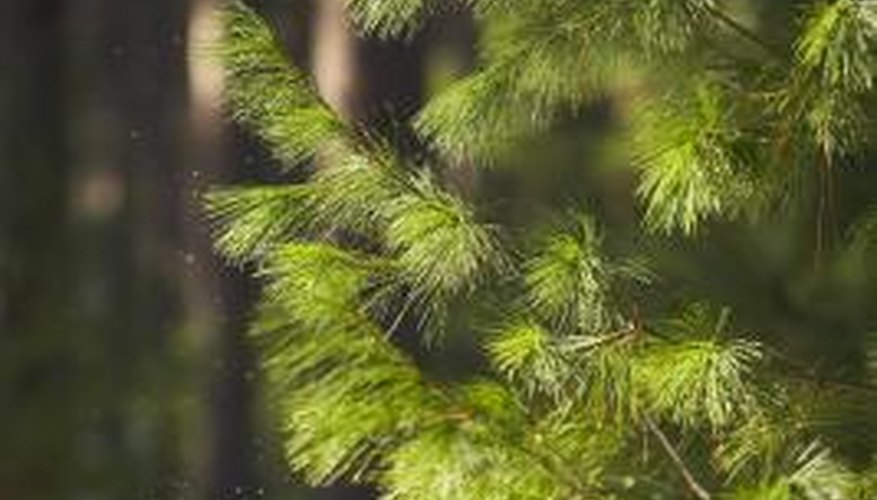If you have a pine tree in your yard, you will know that pine needles do not stay attached to the tree forever. Although pines are evergreens, they replace their needles during the year. Some pine trees drop needles in the fall, others in the spring or summer. When this happens, your yard will be covered in needles. While pine needles can make excellent mulch, people with lawns or those living in areas prone to fires will need to remove fallen pine cones and needles.
Pine Straw Rake
Pine straw is the term for pine needles that have fallen to the ground. A pine straw rake is used by some forestry management teams to rake up large amounts of pine straw, but smaller versions of these rakes also are available for home use. The tines of a pine straw rake are around the same size as the tines of a pitch fork, but are spaced closer together -- about 2 inches apart. The tines do not dig into the ground but rake along the top, making it ideal for raking up pine needles. Some pine straw rakes are designed to fit on the back of a garden tractor for raking large areas.
- Pine straw is the term for pine needles that have fallen to the ground.
- The tines do not dig into the ground but rake along the top, making it ideal for raking up pine needles.
Fan Rake
Fan rakes also are useful for picking up pine needles, and many people already have his type of rake on hand. A fan rake has a triangular-shaped head with tines that are bent at the ends to allow scooping up large amounts of pine needles. Hand rakes are available in many sizes, and some come with adjustable heads and adjustable handles. Fan rakes can be make of plastic or a springy metal such as aluminium. If buying a fan rake specifically for pine needle cleanup, look for a rake with a large number of tines that are relatively close together.
- Fan rakes also are useful for picking up pine needles, and many people already have his type of rake on hand.
Landscape Rake
Landscape rakes are designed to fit behind a garden tractor. They have straight tines designed to dig into the grass or soil and are useful for removing thatch and mulching. They also will pick up pine needles and pine cones. Most landscape rakes can be adjusted to rake at different heights. If picking up pine needles, you want the rake adjusted so that it rakes along the ground. If using it to pick up pine cones, you should adjust the rake to around 1/2 inch off the ground so that it will only pick up cones and not grass, twigs or pine needles.
- Landscape rakes are designed to fit behind a garden tractor.
- If using it to pick up pine cones, you should adjust the rake to around 1/2 inch off the ground so that it will only pick up cones and not grass, twigs or pine needles.
Pine Cone Pick Up
Before raking up pine needles, you will need to remove all of the pine cones you can find. If not removed, the cones can clog up your rake and make raking more difficult. You also need to separate the cones from the needles if you are going to bale the pine needles, or use them as mulch or bedding. There is no special rake that will only rake pine cones, and people usually pick them up by hand. One tool, the Conivore, is designed to pick up pine cones. It consists of a long tube with handles. Place the tube over a pine cone and push down. The Conivore will hold around 20 pine cones at a time.
- Before raking up pine needles, you will need to remove all of the pine cones you can find.
- You also need to separate the cones from the needles if you are going to bale the pine needles, or use them as mulch or bedding.
